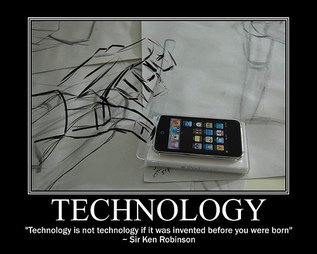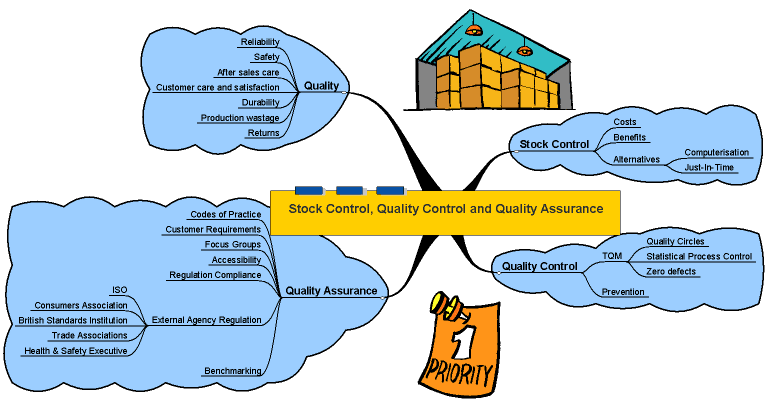TOPIC 1 OPERATIONS
Operations strategies
- performance objectives – quality, speed, dependability, flexibility, customisation, cost
- new product or service design and development
- supply chain management – logistics, e-commerce, global sourcing
- outsourcing – advantages and disadvantages
- technology – leading edge, established
- inventory management – advantages and disadvantages of holding stock, LIFO (last-in-first-out), FIFO (first-in-first-out), JIT (just-in-time)
- quality management – control – assurance – improvement
- overcoming resistance to change – financial costs, purchasing new equipment, redundancy payments, retraining, reorganising plant layout, inertia
- global factors – global sourcing, economies of scale, scanning and learning, research and development
Performance objectives
TASK:
- Use your textbook (or search the Internet if you don't have one) to explain the different performance objectives by expanding this mind-map.
- Think about the various performance objectives (quality, speed, dependability, flexibility, customisation, cost) and assess the performance of two businesses (one retailer of products, on service provider) with which you have regular contact in this table.
Design and development
TASK:
For the car lovers:
- Read about Product design and development, noting the key points.
- Differentiate between market-pull and technology-push products.
- Think about the different ways Apple and Flight Centre develop new products.
- Think about why businesses are constantly designing and developing new cars.
For the car lovers:
Supply chain management
TASK:
- Read the article What is supply chain management? and summarise in this diagram.
- Discuss the impact the Internet and electronic devices (e-commerce is such an outdated term) have had on supply chain management.
- Watch the video below and list as many steps as possible for the logistics process for a product you consume regularly (distribution, transportation, storage, handling/packaging, etc).
- Extension reading: Demand driven supply chain (KPMG) - summarised in the video slip below.
Outsourcing
TASK:
- Read Wisegeek's article What is outsourcing? List the advantages and disadvantages of outsourcing (in general).
- Read the newspaper article 70 Perth jobs go as blinds company outsources to Asia and/or Australian accountants are using offshore outsourcing. Identify the advantages and disadvantages of outsourcing labour.
- Qantas has had major disputes with unions over its plans for outsourcing. See smh article Qantas secures victory over outsourcing limits for a brief overview.
- This is how Apple says it takes responsibility for its suppliers.
Technology
TASK:
Read pp.71-72 from Hickey, Nader & Williams (2011) Cambridge HSC Business Studies, 2nd edition, Cambridge University Press, Melbourne and complete the following questions:
Read pp.71-72 from Hickey, Nader & Williams (2011) Cambridge HSC Business Studies, 2nd edition, Cambridge University Press, Melbourne and complete the following questions:
- Distinguish between leading edge and established technology.
- Identify two leading edge and two established technologies within your school. Deduce the benefits these technologies provide to your learning environment.
- Assess the use of technology to improve the operations of service-based businesses.
Inventory management
CASE STUDY MATERIAL:
TASK:
1. Outline the advantages and disadvantages of holding stock using the following resources:
2. Complete the worksheet using the following resources:
TASK:
1. Outline the advantages and disadvantages of holding stock using the following resources:
2. Complete the worksheet using the following resources:
- WiseGEEK's LIFO and FIFO webpage.
- FIFO/LIFO diagram
- JIT
FIFO and LIFO are more generally known as accounting systems. These videos show how they work in accounting terms:
Quality management
BeneTASK: Complete the attached worksheet using the following resources.
Overcoming resistance to change
TASK:
Imagine your school wants to abolish lessons as you know them and instead make 3 days of self-directed learning, as per instructions left by the teachers, and 2 days of teacher non-compulsory consultation time.
1. Outline the types of resistance the school would encounter using the points listed below.
Imagine your school wants to abolish lessons as you know them and instead make 3 days of self-directed learning, as per instructions left by the teachers, and 2 days of teacher non-compulsory consultation time.
1. Outline the types of resistance the school would encounter using the points listed below.
- financial costs
- purchasing new equipment
- redundancy payments
- retraining
- reorganising plant layout
- inertia
Global factors
- Read Information Week's article Global sourcing creates supply-chain challenges
- economies of scale - read The Benefits and Costs of Globalisation
- scanning and learning - for this one you will need to rely on your textbook
- research and development - do an Internet search and you will find a wealth of information and company examples


